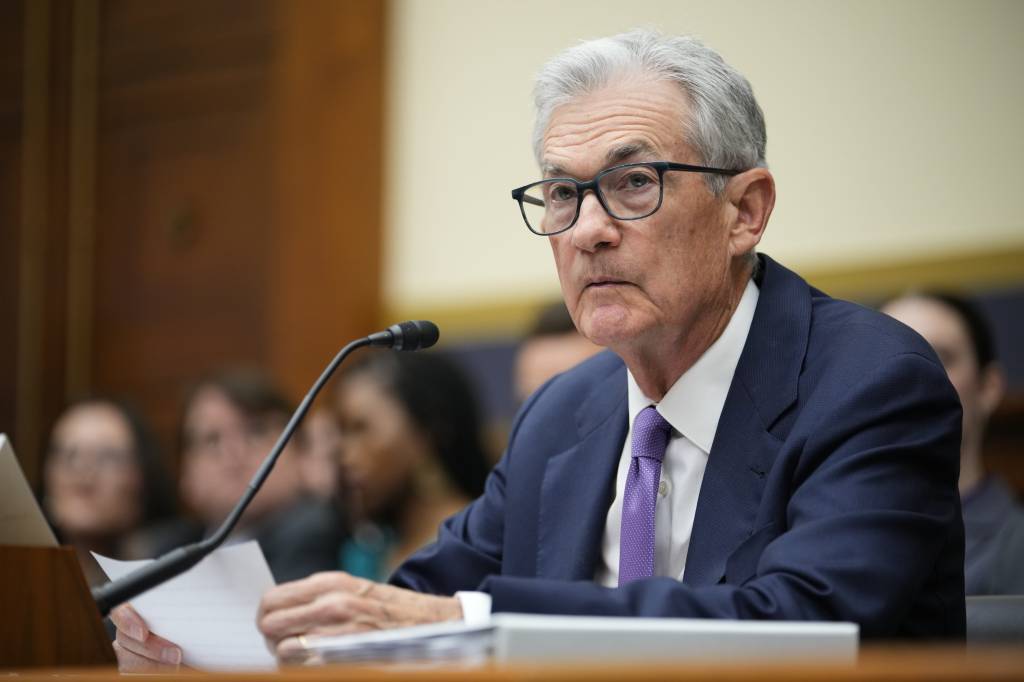Fed Chair Jerome Powell still expects rate cuts this year, but says inflation progress ‘not assured’
Federal Reserve Chairman Jerome Powell told US lawmakers Wednesday that he still expects rate cuts later this year, but added that progress on lowering inflation “is not assured.”
“If the economy evolves broadly as expected, it will likely be appropriate to begin dialing back policy restraint at some point this year,” Powell said in remarks prepared for delivery at a hearing before the House Financial Services Committee.
“But the economic outlook is uncertain, and ongoing progress toward our 2% inflation objective is not assured.”
Even so, Powell told committee members that “there’s no evidence, there’s no reason to think, that the US economy is in, or in some kind of short-term risk of, falling into recession.”
Far from it, Powell said the Fed was on a “good path” to achieve its hoped-for soft landing in which inflation continues falling to its 2% target while the economy grows and the unemployment rate, currently 3.7%, remains low.
Powell’s commentary held close to the language he and his colleagues have used to characterize the current state of the economy, where the inflation reading rose a hotter-than-expected 3.1%, per January’s Consumer Price Index — which tracks changes in the costs of everyday goods and services — and interest rates sit at a 22-year high.
He noted that inflation had “eased substantially” since hitting a 40-year peak in 2022, and said there were risks of both cutting rates too soon and allowing inflation to reaccelerate, especially during an election year as a rematch between Democratic incumbent President Joe Biden and former Republican President Donald Trump takes shape.
“We’re in a political year,” reiterated House Financial Services Committee Chairman Patrick McHenry, a North Carolina Republican, as he quizzed Powell on the central bank’s rate cut plans and noted that everything the Fed does would be seen through the “lens” of the November presidential vote.
Rate cuts “really will depend on the path of the economy. Our focus is on maximum employment and price stability, and the incoming data as they affect the outlook, and those are the things we’ll be looking at,” Powell said.
The Fed “would like to see more data that confirm and make us more confident that inflation is moving sustainably down to 2%” before reducing the policy rate, he added.
Aside from impacting the cost of living for budget-concious voeters, keeping monetary policy too tight for too long can damage an ongoing expansion in the American economy, which has resiliently sustained a below 4% unemployment rate for the past two years.
Powell remained reluctant to say when monetary policy might ease, repeating that officials still need “greater confidence” in a continued decline of inflation before they reduce the benchmark federal funds rate, which has been held in the 5.25% to 5.5% range, the highest in more than 20 years, since July.
For the constituents of lawmakers conducting Wednesday’s hearing, that means interest rates for home mortgages, credit cards and small business loans will stay high.
According to the Federal Reserve Bank of New York, household debt surged to $17.5 trillion in the last three months of 2023.
Credit card debt was, in part, responsible for the advance, as delinquencies increased by $50 billion, to $1.13 trillion, in the fourth quarter, while mortgage balances rose a staggering $112 billion, to $12.225 trillion.
In addition, auto loan balances rose by $12 billion to $1.61 trillion, the Federal Reserve Bank said, continuing an upward trajectory seen since 2011.
Recent data has done little to clarify the direction of the economy and inflation, though Wall Street is widely expecting one of three anticipated rate cuts this year to start in June.
Powell “has been very measured in what he said about the overall health of the US economy. And from an inflationary standpoint, we’re not there yet,” said Phil Blancato, chief executive of Ladenburg Thalmann Asset Management in New York.
“His comments are going to once again support the narratives that the Fed’s not ready to cut yet.”
A surprisingly resilient job market has been attributed to stubbornly high inflation.
The Labor Department’s latest jobs report, reported in January, said that US employers added a whopping 353,000 jobs that month — blowing past economists’ forecasts.
“The Fed can afford to sit on higher rates until the labor market starts to crack,” Virginia-based Harris Financial Group’s managing partner Jamie Cox told The Post.
With Post wires.





